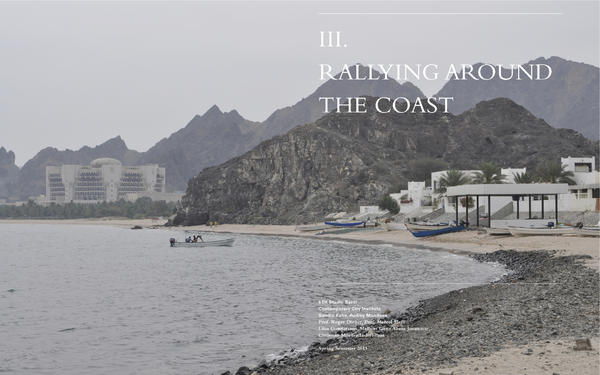Rallying Around the Coast - Reevaluation, Appropriation, Adaptation

Sandra Kuhn, Audrey Mondoux
Oman is abundant in natural beauty, which in addition to being scarcely populated signifies a potential for a rich assortment of tourism offers, both of the ‘back-packer’ sort, and the ‘upper-end’ sort. Such an economy has only recently come on the agenda for the Omani government, which is for the moment following a strategy of developing high value tourism offers for a small amount of people who are willing and able to afford it. The monolithic and extreme geography of the country conditions every kind of intervention, therefore it is not surprising that the tourism potential varies in type when one is on the coast, in the oasis, atop a mountain, or in the desert. The coast along the Muscat and Batinah plain is riddled with large scale private investments, where tourist ‘enclaves’ are starting to characterize the overall coastline. The flat plain, into which Muscat has also extended westwards, is already home to a number of towns and fishing villages, not to mention the new housing developments that the land allotment policy is proliferating. This preexisting condition, and the presence of the Highway no. 1 linking Muscat to Sohar, implies that these ‘islands’ are inevitably in some kind of relationship to the overall structure of the plain, and of Muscat, even though their modus operandi is seclusion. The nature of the tourism machine further implies the need for an under-belly, i.e. the service labor for this industry. The sector has been targeted by the government as an area with development potential and investments are done in the hope to diversify the country's economy.

